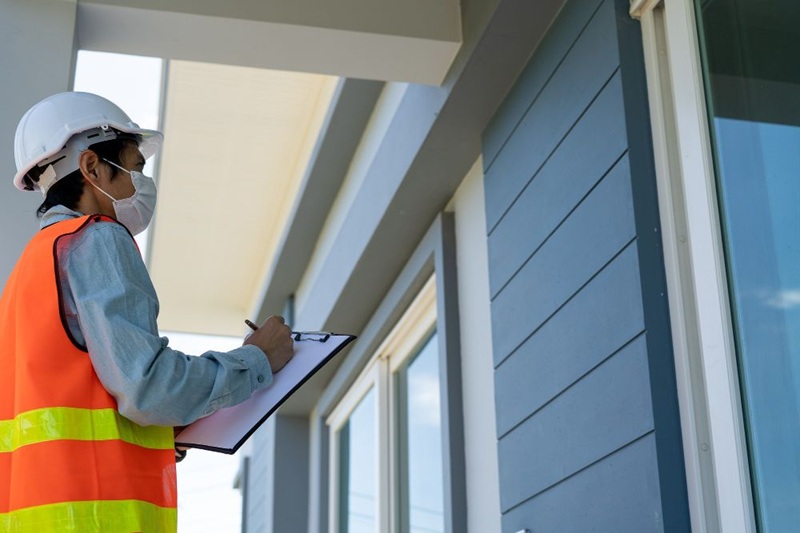
The urgent need for BCA facade inspection has transformed how Singapore manages its distinctive skyline of aging towers and gleaming new developments. Picture this: you’re walking down Orchard Road when suddenly, without warning, a chunk of concrete cladding breaks free from the 17th floor and plummets toward the crowded sidewalk below. It’s not some far-fetched scenario—it’s precisely the kind of incident the Building and Construction Authority’s facade inspection regime was designed to prevent. In a city where vertical living isn’t just common but unavoidable, the stakes couldn’t possibly be higher.
The High-Rise Challenge: Singapore’s Unique Urban Context
Singapore’s architectural landscape presents a perfect storm of facade deterioration factors. The city-state’s relentless tropical climate subjects buildings to punishing conditions that would make materials scientists wince:
- Year-round humidity levels routinely exceeding 80%
- Annual rainfall averaging 2,340mm—nearly a metre more than London
- Constant exposure to salt-laden air in a maritime environment
- Intense ultraviolet radiation degrading materials at accelerated rates
- Daily thermal cycling causing continuous expansion and contraction
Many of Singapore’s buildings were constructed during the rapid development boom of the 1970s and 1980s, using technologies and materials that have since proven less durable than anticipated. It’s a recipe for progressive deterioration that demands vigilant monitoring.
“Our analysis indicates that approximately 4,300 buildings in Singapore now fall under mandatory facade inspection requirements, with an estimated 15% displaying signs of significant deterioration requiring immediate remediation.” — Building and Construction Authority Annual Report, 2023
Beyond Aesthetics: The Safety Imperative
Facade failures aren’t merely cosmetic concerns—they represent genuine safety hazards with potentially fatal consequences. A small 1kg piece of cladding falling from height can strike with the force of a motorcycle, transforming routine maintenance into a public safety imperative.
The BCA’s inspection programme was born from necessity after several alarming incidents, including the 2016 Clementi concrete panel collapse that injured pedestrians and the 2018 dislodged cladding from a Boat Quay shophouse that narrowly missed tourists. These events transformed facade maintenance from a building preservation issue into a critical safety concern, resulting in today’s systematic approach to identifying vulnerabilities before they become dangerous failures.
Inside the Protocol: How BCA Inspections Actually Work
The nuts and bolts of Singapore’s facade inspection regime reveal a carefully structured system designed to ensure comprehensive assessment without creating unreasonable burdens on property owners:
- Buildings exceeding 13 metres in height (approximately 4 storeys) require inspection
- The inspection cycle operates on a 7-year recurring schedule
- Only BCA-approved Facade Inspectors may conduct official assessments
- The process includes both visual examination and targeted testing
- Building owners receive mandatory timelines for addressing identified issues
What makes this system particularly effective is its graduated response protocol. Minor defects require documentation and scheduled maintenance, while critical safety issues trigger immediate cordoning requirements and expedited remediation orders.
“Since implementing mandatory facade inspection protocols in 2016, Singapore has seen a 64% reduction in reported incidents of facade element failures affecting public areas.” — Ministry of National Development, 2023
The Technology Revolution in Vertical Assessment
Traditional facade inspection methods involved expensive, time-consuming approaches like suspended scaffolding or industrial rope access. The contemporary BCA-approved inspection process embraces technological innovations that have revolutionized both efficiency and effectiveness:
- UAV (drone) systems equipped with high-resolution imaging capabilities
- Infrared thermography identifying subsurface moisture intrusion invisible to the naked eye
- Ground-penetrating radar detecting hidden structural issues within walls
- Digital photogrammetry creating precise 3D models for comparison over time
These technologies haven’t merely made inspections faster and less expensive—they’ve fundamentally expanded what’s possible in facade assessment. Areas once considered impractical to examine closely now receive detailed scrutiny, while documentation quality has improved exponentially.
The Economic Equation: Prevention vs. Crisis Response
The financial calculation surrounding facade maintenance often suffers from short-term thinking. Property owners see inspection costs as immediate expenditures while viewing potential failures as abstract possibilities. This perception ignores the stark mathematical reality:
- Average BCA facade inspection: S$8,000-S$15,000 for a mid-sized commercial building
- Routine maintenance addressing minor issues: S$20,000-S$75,000
- Major rehabilitation after significant deterioration: S$500,000-S$2,000,000
- Liability and damages from catastrophic failure: Potentially millions
Beyond these direct costs, consider the operational disruptions that emergency repairs create—tenant displacement, business interruption, and reputational damage. The economics of prevention versus crisis response couldn’t be clearer when viewed comprehensively.
Beyond Compliance: The Strategic Advantage
Forward-thinking property owners increasingly recognize facade maintenance not merely as a regulatory obligation but as a strategic asset management approach. Well-maintained building exteriors directly impact:
- Property valuation and rental yield potential
- Tenant attraction and retention capabilities
- Insurance premiums and coverage availability
- Energy performance through envelope integrity
- Overall brand perception in competitive markets
This perspective shifts BCA facade inspection from reluctant requirement to valuable investment—a transformation increasingly evident among Singapore’s sophisticated commercial property portfolios.
Climate Adaptation: The Growing Urgency
Singapore’s changing climate conditions add new urgency to facade inspection protocols. Climate projections indicate the city-state will experience increased rainfall intensity, rising average temperatures accelerating material degradation, and more frequent extreme weather events including microbursts. These changing conditions mean historical performance data becomes increasingly unreliable for predicting future behavior, making regular inspection and adaptive maintenance more critical than ever.
Conclusion
The evolution of Singapore’s approach to building envelope safety reflects a growing understanding that urban density creates specific vulnerabilities requiring systematic management. As the city-state’s skyline continues its vertical expansion and existing structures age, the importance of regular, professional assessment only increases. The framework established by the Building and Construction Authority provides not merely a regulatory requirement but a vital public safety protocol protecting both property values and human lives. For building owners navigating these responsibilities, the path to comprehensive protection increasingly depends on thorough, professional BCA facade inspection.




